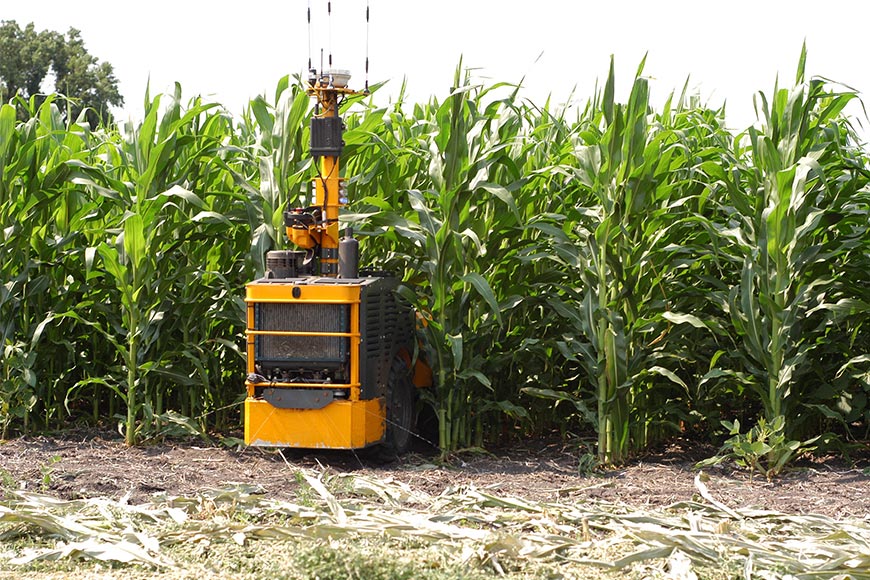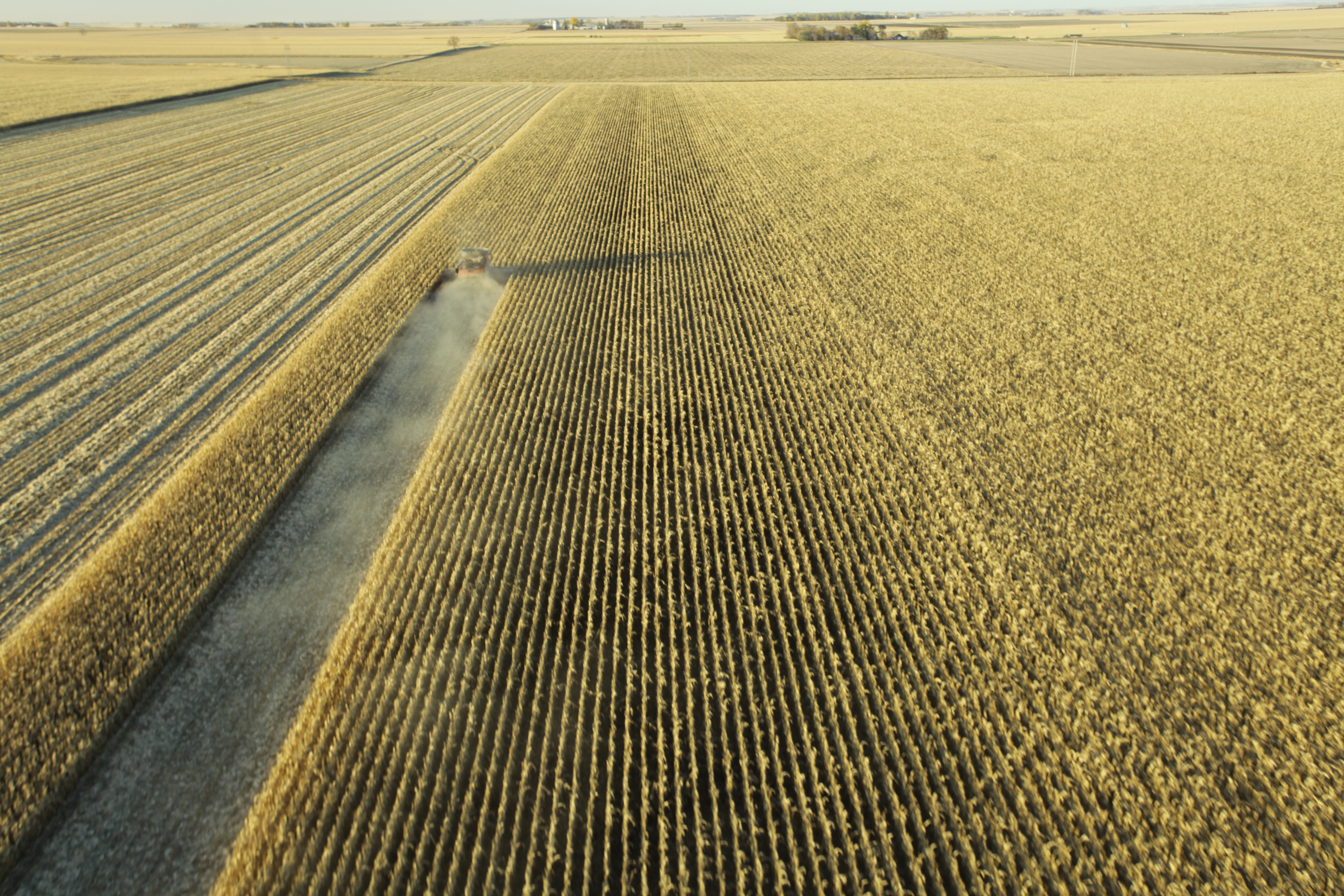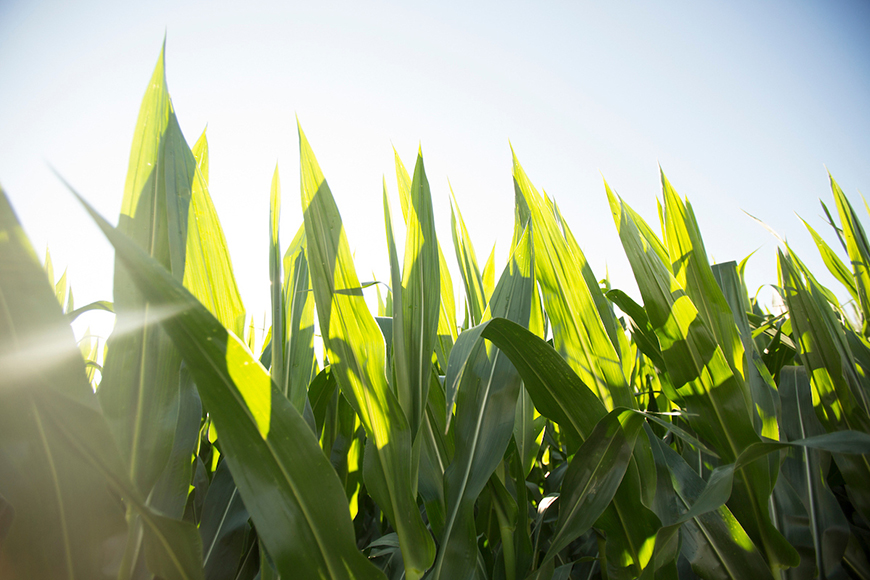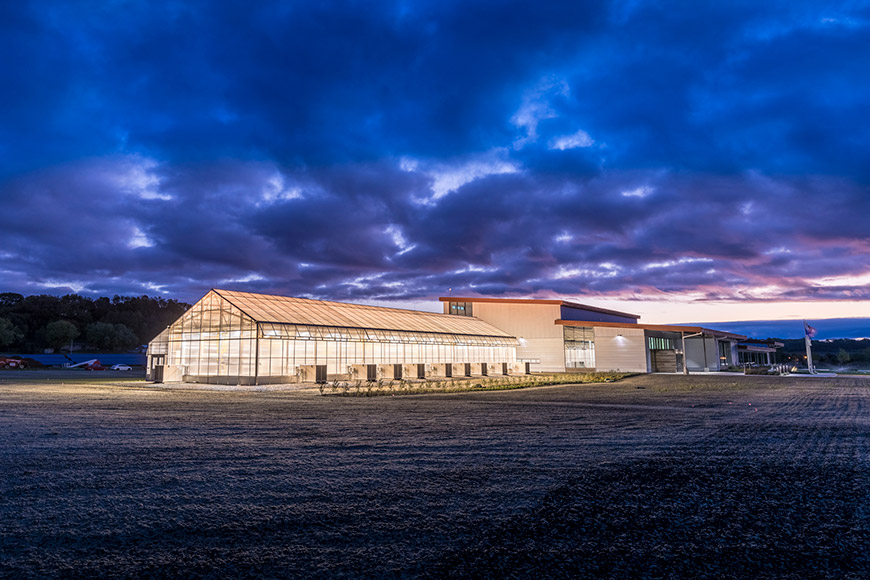Small Machines Tackle Big Jobs

It’s no secret that ag technology is constantly evolving. Lately we’ve been seeing more and more innovations surrounding autonomous technology.
We wanted to get insights from one of the emerging players in this space, so I spoke with Kent Cavender-Bares, chief executive officer of Rowbot Systems, which is a company involved in autonomous bots. An environmental engineer by training, Cavender-Bares and his two brothers — Charlie, a large-scale dairy producer and corn grower, and John, a robotics expert — founded Rowbot Systems in 2012. The brothers see robotics playing an ever-increasing role on American farms.
Nitrogen-fueled innovation
The company began in order to change the way nitrogen is managed in the Corn Belt. “We wanted to help farmers figure out how to manage nitrogen better in their corn crops, and hopefully make them money in the process,” says Cavender-Bares. The challenge, he notes, is that today’s large equipment straddles corn crops. As the crop grows, either the machinery can’t move through the field without damaging the crop, or the farmer has to move to ever-taller equipment.
How it works
The Rowbot measures approximately 2 feet wide, 7 feet long and 3 feet tall, and can carry about 40 gallons of fertilizer. It uses GPS mapping to navigate down the row among the corn plants, as well as on-board sensors to “see” the stalks on either side in front of the machine. The Rowbot is also capable of seeding cover crops. Cavender-Bares and his team have run the machines on test plots in conjunction with universities and with farmers in Minnesota, Iowa and Illinois on a test-marketing basis.
Fleet farm
Rowbot Systems intends to go to market as a fleet service, with farmers paying by the acre for timely nitrogen applications or cover crop seeding. “We’ve heard very clearly from farmers that they have plenty of technology to deal with,” says Cavender-Bares. “At least for the foreseeable future, we intend to have our teams managing fleets of 10 to 20 machines that would operate on five or more fields simultaneously.” Of course, the number of machines on a given farm can be right-sized to optimize the performance and efficiency for the individual farmer. A commercial launch is anticipated in the next couple of years.
How farmers could benefit
Cavender-Bares says the challenge is getting nitrogen on the field at the right time, in the right place and at the right amount. “What we do is simply move nitrogen applications into the season and perform repeated in-season applications so that it is more effectively used,” he says.
More timely nitrogen applications can result in greater yield and ROI potential. Limiting inputs and targeting nitrogen applications can also help farmers improve their stewardship practices. “I want farmers to realize it’s a win-win-win,” he says. “We can help them save money, make money through higher yields and be better stewards at the same time.”
So keep an eye out for autonomous bots. They may be coming soon to a farm near you — perhaps even your own.
We wanted to get insights from one of the emerging players in this space, so I spoke with Kent Cavender-Bares, chief executive officer of Rowbot Systems, which is a company involved in autonomous bots. An environmental engineer by training, Cavender-Bares and his two brothers — Charlie, a large-scale dairy producer and corn grower, and John, a robotics expert — founded Rowbot Systems in 2012. The brothers see robotics playing an ever-increasing role on American farms.
Nitrogen-fueled innovation
The company began in order to change the way nitrogen is managed in the Corn Belt. “We wanted to help farmers figure out how to manage nitrogen better in their corn crops, and hopefully make them money in the process,” says Cavender-Bares. The challenge, he notes, is that today’s large equipment straddles corn crops. As the crop grows, either the machinery can’t move through the field without damaging the crop, or the farmer has to move to ever-taller equipment.
How it works
The Rowbot measures approximately 2 feet wide, 7 feet long and 3 feet tall, and can carry about 40 gallons of fertilizer. It uses GPS mapping to navigate down the row among the corn plants, as well as on-board sensors to “see” the stalks on either side in front of the machine. The Rowbot is also capable of seeding cover crops. Cavender-Bares and his team have run the machines on test plots in conjunction with universities and with farmers in Minnesota, Iowa and Illinois on a test-marketing basis.
Fleet farm
Rowbot Systems intends to go to market as a fleet service, with farmers paying by the acre for timely nitrogen applications or cover crop seeding. “We’ve heard very clearly from farmers that they have plenty of technology to deal with,” says Cavender-Bares. “At least for the foreseeable future, we intend to have our teams managing fleets of 10 to 20 machines that would operate on five or more fields simultaneously.” Of course, the number of machines on a given farm can be right-sized to optimize the performance and efficiency for the individual farmer. A commercial launch is anticipated in the next couple of years.
How farmers could benefit
Cavender-Bares says the challenge is getting nitrogen on the field at the right time, in the right place and at the right amount. “What we do is simply move nitrogen applications into the season and perform repeated in-season applications so that it is more effectively used,” he says.
More timely nitrogen applications can result in greater yield and ROI potential. Limiting inputs and targeting nitrogen applications can also help farmers improve their stewardship practices. “I want farmers to realize it’s a win-win-win,” he says. “We can help them save money, make money through higher yields and be better stewards at the same time.”
So keep an eye out for autonomous bots. They may be coming soon to a farm near you — perhaps even your own.





